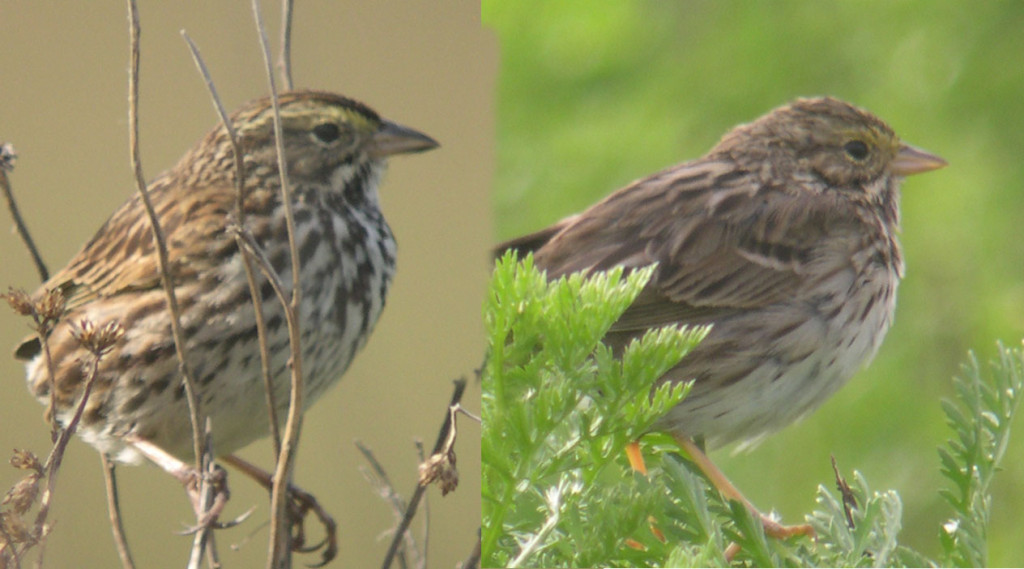In early March 2009 it was my pleasure to spend a few days in California at the San Diego Bird Festival. On my first morning in San Diego I headed straight out to the Tijuana River National Estuarine Research Reserve hoping to spend a few hours studying Savannah Sparrows (who wouldn’t, right?). I had seen some Belding’s Savannah Sparrows in March 2008 in Orange County, California, and realized that the treatment of this endangered subspecies in my field guide was not very good, so I was anxious to learn more.
I succeeded in seeing dozens of the resident Belding’s, with many birds singing and territorial around the marsh. I also saw quite a few of the migratory northern subspecies of Savannah Sparrows (ranging from grayish to brownish) in weedy areas around the margins of the marsh.
The image below compares two of my photos showing the most obvious differences between the subspecies. Compared to northern birds, Belding’s has:
- longer and thicker bill with curved culmen
- darker and much thicker streaks on the underside
- darker streaks on the upperside and coarser and darker markings on the face
- Belding’s never (as far as I could see) raises a crest, while the northern birds often look slightly crested and show a distinct peak on the rear crown

Differences in behavior, habitat, and molt were also fairly obvious, and should be very helpful for identification (but bill and plumage features should be checked to confirm).
Belding’s in early March were singing and territorial, chasing each other across the marsh, while the northern birds were in small, loose flocks moving together widely across dry grassy and weedy areas around the marsh
Belding’s flight was low and weak, with round body and fluttering wingbeats, reminding me of Sharp-tailed Sparrow, unlike the stronger, higher, more “bounding” and undulating flight of northern Savannahs
in early March the Belding’s were all in clean fresh plumage, while the northern birds were molting and scruffy with missing feathers all over the head and body
I could not hear any difference in the song of Belding’s compared to Savannah Sparrows from farther north.
I was struck by how much stockier and larger-billed the Belding’s looked in comparison to the northern subspecies, in many ways intermediate between northern and “Large-billed” Savannah Sparrows. Apparently some populations intermediate between Belding’s and northern birds are resident farther north along the California coast, but alongside the migratory northern subspecies the Belding’s Savannah Sparrows in southern California seem quite distinctive.


Thanks, David; great stuff about great birds!
Rick Wright
I will be doing a Grand California birding trip in August of 2010 (this year) and, as one who enjoys subspecies, plan to stop by Tijuana River N.E. and see the Belding’s. Thanks for this great article. It helped more more than Rising’s book on understanding the differences.
I would love a field guide JUST on subspecies!! How about a digital version? You could leave out the species lacking them to make space!! ; )
Love the blog and the books.
Lee
I have grey ring necked love birds feeding on my terrace. there is one or two small sparrow looking
birds (never at the same time) that seem to come and feed with the love birds. At first I thought they might be their babies, but they are not. they look like Savannah sparrows. Is this possible? ifnot what do you think they are?